Regions at a Glance
From the multicultural melting pot of London to the remote islands of the Outer Hebrides, Britain’s regions offer a kaleidoscope of classic experiences. Southern England is where you’ll find the archetypal English countryside of lush meadows, thatched cottages and games of cricket on the village green. The southwestern counties of Devon and Cornwall are wilder in nature, known for their surf beaches and seafood restaurants. Lovers of mountain scenery will be spoilt for choice in the Scottish Highlands, the Lake District and North Wales, while those who prefer gritty industrial heritage and lively nightlife will enjoy the northern English cities of Manchester, Liverpool and Newcastle. And bang in the middle is Yorkshire, with everything from the gorgeous city of York to the rolling moors of the Yorkshire Dales.
Regions at a Glance
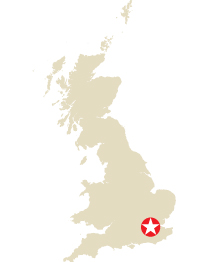
London
Historic Streets
London's ancient streets contain many of Britain's most famous and history-steeped landmarks. The echoes of the footfalls of monarchs, poets, whores and saints can still be detected in places like the Tower of London, Westminster Abbey and St Paul's Cathedral, as well as the pubs and coaching inns that once served Dickens, Shelley, Keats and Byron.
Entertainment
From West End theatres to East End clubs, from Camden's rock venues to Covent Garden's opera house, from tennis at Wimbledon to cricket at Lord's or football at Wembley, London's world-famous venues and arenas offer a perpetual clamour of entertainment.
Museums & Galleries
While the British Museum is the big crowd-puller, the capital has museums and galleries of every shape and size – and many of the very best are free.
Regions at a Glance
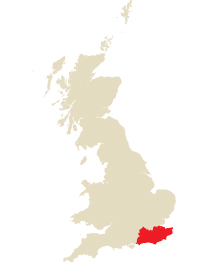
Canterbury & Southeast England
Canterbury Cathedral
A major reason to visit southeast England, Canterbury Cathedral is one of the finest cathedrals in Europe, and one of the most holy places in Christendom. Write your own Canterbury tale as you explore its atmospheric chapels, cloisters and crypts.
Invasion Heritage
The southeast has always been a gateway for Continental arrivals, some more welcome than others. Castles and fortresses, the 1066 battlefield and Dover's secret wartime tunnels tell the region's story of invasion and defence.
Hops & Grapes
Kent is deservedly known as the Garden of England, long celebrated for its hops, which are still used to flavour traditional English beers. Sussex isn't far behind, with England's finest sparkling wine giving the French stuff a run for its euro.
Regions at a Glance
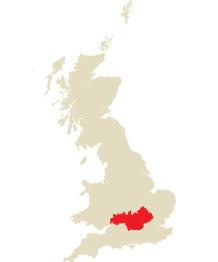
Oxford, Cotswolds & Around
Oxford Colleges
Oxford’s architecture will never leave you indifferent, whether you gaze across the 'dreaming spires' from the top of Carfax Tower, or explore the medieval streets on foot, or simply admire the fantastic gargoyles on the college facades.
Blenheim Palace
Favoured by the rich and powerful for centuries, this region is scattered with some of the finest country houses in Britain. Top of the pile is the baroque masterpiece of Blenheim Palace, birthplace of Sir Winston Churchill.
Cotswold Villages
Littered with picturesque 'chocolate box' scenes of honey-coloured stone cottages, thatched roofs, neat greens and cobbled lanes, the villages of the Cotswolds provide a charming snapshot of rural England.
Regions at a Glance
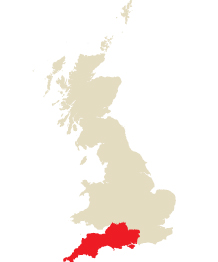
Bath & Southwest England
Cornish Beaches
Britain's southwest peninsula juts determinedly into the Atlantic, fringed by an almost endless chain of sandy beaches, from the picturesque scenery of Kynance Cove to the rolling surf of Newquay.
Roman Remains
The handsome Georgian city of Bath – the whole town is a Unesco World Heritage site – is home to one of the best-preserved Roman bath complexes in the world.
Hiking & Surfing
If you like to take it nice and easy, come to walk the moors or tootle along cycle trails. If you prefer life fast and furious, come to surf the best waves in England or learn to dive or kitesurf.
Regions at a Glance
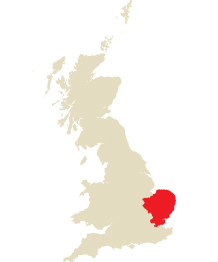
Cambridge & East Anglia
Historic Churches
From the magnificent cathedrals of Ely, Norwich and Peterborough to Cambridge's King's College Chapel, Trinity's Great Court and the New Court at St John's, East Anglia's architectural splendour is second to none.
Seaside Resorts
With wide sandy beaches, great seafood, delightful old pubs, globally important bird reserves, historic villages still proud of their nautical heritage and classic seaside resorts such as Southwold and Cromer, the coastline of East Anglia is rich and varied.
The Broads
The Norfolk and Suffolk Broads is a tranquil area of lakes and meandering rivers, and an ideal spot for boating, birding, canoeing, cycling or walking, or just getting back to nature at a leisurely pace.
Regions at a Glance
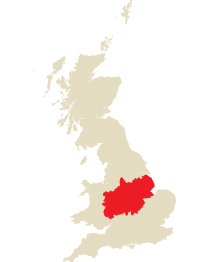
Birmingham, the Midlands & the Marches
Hiking & Biking
The Peak District National Park, along with Cannock Chase, the Shropshire Hills, the Roaches, the Malvern Hills, Offa's Dyke Path, the Tissington Trail and the Pennine Cycleway, make this region great for hiking and biking.
Chatsworth
Grand houses like Haddon Hall, Burghley House and especially Chatsworth promise sprawling deer-filled grounds and grand interiors full of priceless heirlooms and walls dripping with oil paintings.
Curry Capital
Foodies take note: Birmingham is the curry capital of the country (and, increasingly, a magnet for Michelin-starred chefs), while the tiny town of Ludlow is an epicentre of gastronomic exploration.
Regions at a Glance
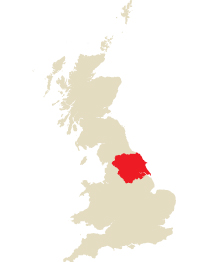
Yorkshire
Hiking & Biking
With rolling hills, scenic valleys and high moors and a cliff-lined coast all protected by national parks, Yorkshire is a natural adventure playground for hiking, biking, surfing and rock climbing.
Real Ale
Lush pasture means Yorkshire beef and lamb is sought after, while the famous breweries of Masham turn out excellent real ales, always best sampled in one of Yorkshire's equally excellent traditional pubs.
Ancient Abbeys
From York's Viking heritage and the ancient abbeys of Rievaulx, Fountains and Whitby, to the industrial archaeology of Leeds, Bradford and Sheffield, you can follow several of Britain's most important historical narratives in Yorkshire.
Regions at a Glance
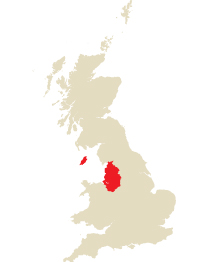
Manchester, Liverpool & Northwest England
Historical Museums
The northwest's collection of heritage sites, from the wonderful People's History Museum in Manchester to the International Slavery Museum in Liverpool, is testament to the region's rich history and its ability to keep it alive.
Football
Two cities, Liverpool and Manchester, give the world four famous clubs, including the two most successful in English history. The National Football Museum in Manchester is just another reason for fans to visit this region.
Blackpool
The epitome of the classic English seaside resort just keeps on going, thanks to the rides of the Pleasure Beach amusement park, where adrenalin junkies can always find a fix.
Regions at a Glance
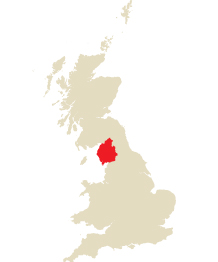
The Lake District & Cumbria
Lakes & Mountains
The Lake District National Park is the most mountainous part of England, home to Scafell (England's highest summit) and countless scenic lakes. Some are big and famous – Windermere, Coniston, Ullswater – while others are small, hidden and little known.
Walking
If anywhere is the heart and soul of walking in England, it's the Lake District. Casual strollers find gentle routes through foothills and valleys, while serious hikers tackle high peaks and fells.
William Wordsworth
The beauty of the Lake District famously moved William Wordsworth to write his ode to 'a host of golden daffodils', and Wordsworth landmarks such as Dove Cottage and Hawkshead Grammar School are among the region's big draws.
Regions at a Glance
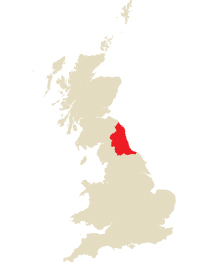
Newcastle & Northeast England
Hadrian's Wall
One of the world's premier Roman sites, this potent symbol of imperial power strides for over 70 miles across the neck of England, from Tyneside to the Solway Firth. You can travel its length, stopping off at forts along the way.
Northumberland National Park
If it's widescreen vistas you're after, the broad moors, stone villages and expansive views of England's most northerly national park never fail to please.
Alnwick Castle
Northumberland is dotted with some of Britain's finest castles, including the coastal fortresses of Bamburgh and Dunstanburgh, but Alnwick – setting for the Harry Potter movies – is the most famous.
Regions at a Glance
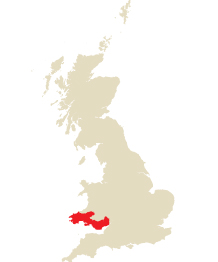
Cardiff, Pembrokeshire & South Wales
Victorian Revival
From the whimsical, fairy-tale structures of Cardiff Castle and Castell Coch to the elegant shopping arcades of the city centre, the Welsh capital has plenty to keep fans of Victorian architecture interested.
Pembrokeshire & The Gower
South Wales boasts two of Britain's most beautiful stretches of coast – the Gower Peninsula and Pembrokeshire – between them offering clifftop walks, family-friendly beaches, surfing hot spots and watery adventures such as sea-kayaking and coasteering.
Carreg Cennen
South Wales has some of the country's best castles, including Chepstow and Pembroke, but remote Carreg Cennen, in the heart of the Brecon Beacons, is the most spectacularly positioned of them all.
Regions at a Glance
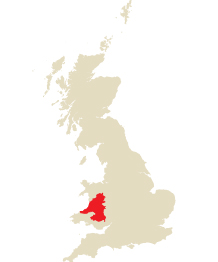
Hay-on-Wye & Mid-Wales
Red Kites
In the mountains and moors of the Brecon Beacons and many other parts of the region you can spot birds of prey – most famously the once-rare red kites, most easily spotted at feeding stations such as Gigrin Farm in Rhyader.
Market Towns
From book-obsessed Hay-on-Wye to quirky Llanwrtyd Wells and quaint Llandrindod Wells, the market towns of Mid-Wales are full of charm.
Abergavenny
Restaurants, inns and gastropubs throughout the region are at the forefront of a new Welsh gastronomy, all focused on the nation's foodie capital at Abergavenny.
Regions at a Glance
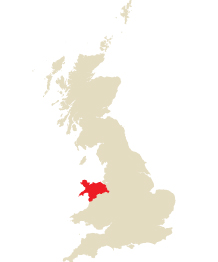
Snowdonia & North Wales
Snowdon
Home to some of Britain's finest mountain scenery outside of the Scottish Highlands – and for most visitors much more accessible – the imposing peaks of Snowdon and its neighbours provide a scenic backdrop for innumerable outdoor pursuits.
Welsh Slate
Welsh slate once roofed much of the world and the region's quarries and caverns bear witness to the lives of generations of workers, while rejuvenated railways now shunt tourists through spectacular terrain.
Seaside Resorts
From the North Coast's popular resort towns to the surf spots and quiet bays of Anglesey and the Llŷn Peninsula, North Wales has plenty of beach to go round.
Regions at a Glance
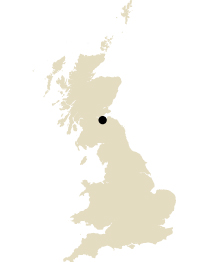
Edinburgh
Festival City
Dubbed the Athens of the North, the Scottish capital is a city of art and literature, home to the world's biggest arts festival. Outside festival time, there's plenty to enjoy in the city's many theatres and world-class art galleries and museums.
Edinburgh Castle
Perched on a brooding black crag overlooking the city centre, Edinburgh Castle has played a pivotal role in Scottish history, the focus of the nation's capital city since medieval times.
Eating Out
Edinburgh has more restaurants per head of population than any city in the UK, while Scottish cuisine has been given a makeover by inventive chefs using top-quality local produce.
Regions at a Glance
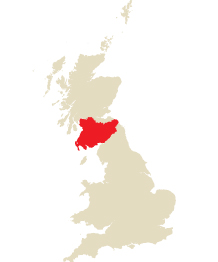
Glasgow & Southern Scotland
Kelvingrove Art Gallery & Museum
Glasgow's mercantile and industrial history has left the city with a wonderful legacy of museums and art galleries, dominated by the grand Victorian cathedral of culture that is Kelvingrove.
The Great Abbeys
Rolling countryside and ruined abbeys are the big draws along the country's southern border, where you'll find the Gothic ruins of Melrose, Jedburgh and Dryburgh abbeys.
Dumfries House
This region is rich in Adam-designed mansions such as Culzean Castle and Floors Castle, but the almost perfectly preserved Chippendale time-capsule Dumfries House takes top place.
Regions at a Glance
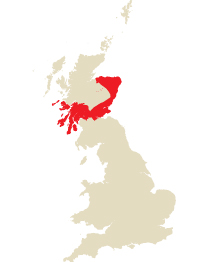
Argyll, Central & Northeast Scotland
Stirling Castle
Central and Northeast Scotland are home to the greatest concentration of castles in the country, from the turreted exuberance of Craigievar to the more restrained elegance of Balmoral, and topped by the regal splendour of Stirling.
Island-Hopping
Island-hopping is a great way to explore Scotland's western seaboard, and the islands of this region – wild Jura, scenic Mull and the jewel of Iona – provide a brilliant introduction.
Speyside Distilleries
No trip to Scotland is complete without a visit to a whisky distillery – the Speyside region and the isle of Islay are epicentres of the industry.
Regions at a Glance
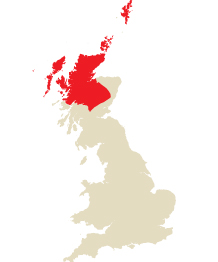
Central & Northern Highlands & Islands
Hill Walking
Between them, the Cairngorm resort of Aviemore, gateway to snow sports in winter and wild hill-walking in summer, and Fort William, self-styled Outdoor Capital of the UK, offer enough adventure to keep you busy for a year.
Mountain Landscapes
Landscape photographers are spoilt for choice, with classic views ranging from the mountain beauty of Glen Coe and the snow-patched summits of the Cairngorms to the rock pinnacles of the Cuillin Hills.
Prehistoric Sites
The region is rich in prehistoric remains, including the standing stones of Callanish, the neolithic tomb of Maes Howe, and Skara Brae – Europe's best-preserved prehistoric village.